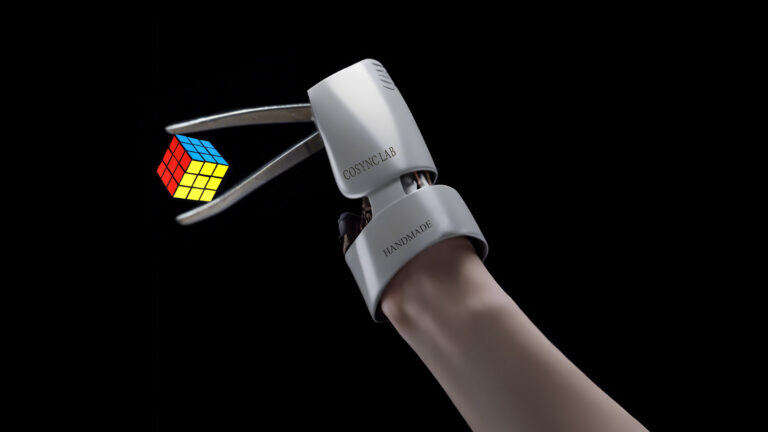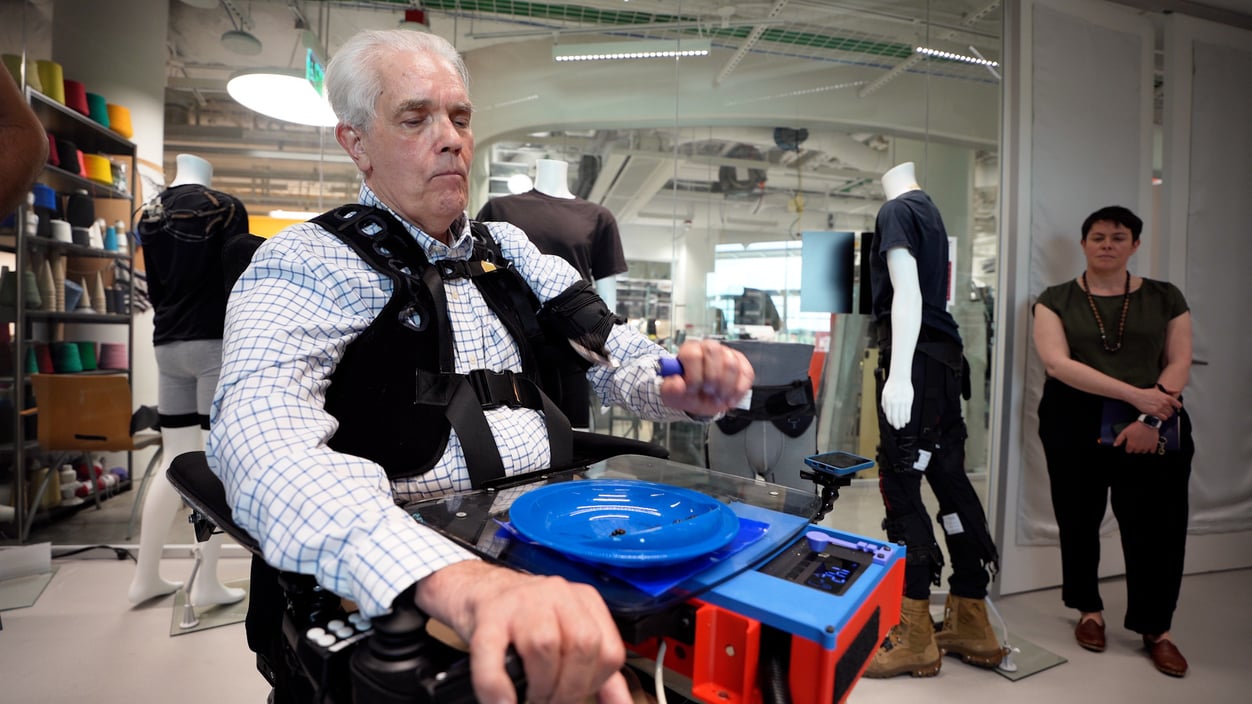IN THE LAB
Can tools like tweezers shape the prosthetics of the future?
Upper-limb prostheses may be due for an update: nearly half of people who use them abandon them. A new study in iScience paints a bold vision: what if bionic devices were integrated with tools, like tweezers or wrenches, instead of hands? STAT's Timmy Broderick takes a close look at the research, which let participants try these new devices in virtual reality.

"Our question was, can human beings merge with tools? Can we merge biology and technology?" said co-author Ottavia Maddaluno, a neuroscientist at the Laboratory of Neuroscience and Applied Technology, Santa Lucia Foundation in Rome. "And our results find out that, surprisingly, we can."
As Timmy writes, the holy grail for researchers developing prostheses is "embodiment": a feeling of agency, ownership, and an ability to gather information and sensory feedback about the world. Read more from Timmy.
How a box and a balloon boosted an ALS patient's independence
This week Timmy also examined the world of wearable "robots" that could help people with ALS, a fatal neurodegenerative disease affecting motor neurons, and strokes. ALS patient John Goodson tells Timmy he uses one such device to help him eat: It's made of a balloon under his left arm that's connected to a box on the floor, and he can adjust the amount of compressed air in the balloon depending on how much support he needs. "Having the device allows me to regain some of that sense of autonomy," he said.

"When people think about wearable robots, oftentimes you think about Hollywood, so the Iron Man suit or things like that," Conor Walsh, who founded the Harvard Biodesign Lab, which built the prototype, told Timmy. "But the reality is for a lot of people, they need assistance with some device, but they also don't want to be encumbered by wearing that device. Our strategy and approach has always been: What's the minimal viable device that can provide enough benefit to a person that they would be willing to wear?"
Read more from Timmy, and watch the video, here.
virtual care
Finance, insurance exec takes the reins at Teladoc
Much of Teladoc's decades-long future has been shaped by former CEO Jason Gorevic, who led the virtual care behemoth for 15 years. Just a few months after his abrupt dismissal by the board this spring, a new leader has taken over: Chuck Divita, who previously led the commercial markets business at GuideWell, which owns the Florida Blue health plan. The board of directors liked that he has had a long career in health care, as well as at another public insurance-focused company.
Wall Street analysts seem cautiously optimistic; Divita himself was not available for interviews, so it's not clear yet what his plan is for the company that's struggled to sustain the pandemic-era surges in membership and appointment volume. Teladoc's stock is trading at a perilous low, just about $10 a share, far below its $300 peak in 2021 and its $19 initial public offering.
"The bigger question, which as of today is harder to answer, is whether the current strategic path for TDOC is the one the company will continue to pursue," an investor note from Leerink Partners reads. Teladoc laid out a three-year outlook earlier this year weeks before Gorevic's departure in April forecasting modest growth. Read more from me here.
lizzy's device digest
Medical device trials still don't enroll enough women
My colleague Lizzy Lawrence reports on a persistent and pervasive issue in medical research: women continue to be underrepresented in studies, especially for cardiovascular devices.
In a paper published in JAMA Internal Medicine, researchers discovered that the percentage of women in high-risk medical device trials didn't increase between 2010 and 2020. They also generally made up just about a third of participants in almost 200 trials published from 2016 to 2022, ranging from 46 percent in orthopedic trials to 29 percent for cardiovascular studies.
The issue isn't new, and it certainly isn't unique to medical devices. But biological differences between men and women mean different treatments could affect them differently; it's especially true in heart disease.
"The risks are different," Rita Redberg, a University of California, San Francisco, cardiologist told Lizzy. "Women have more bleeding, women have more procedural complications, and we generally have higher mortality rates." Read more from Lizzy here.
The latest on FDA's "breakthrough" device program
If you're tracking which device companies have recently earned the FDA's "breakthrough" product designation, check out STAT's Breakthrough Device Tracker, updated by Lizzy. The program is designed to hasten patient access to novel, hopefully life-saving products — but it's also helped companies score attention from investors and a potentially easier path to Medicare coverage. Some news of note, from Lizzy:
- The breakthrough program continues to favor diagnostic companies. Roche earned breakthrough status both for its Alzheimer's blood test, developed with Eli Lilly, and its cardiovascular risk test. Companies developing cancer tests, like AI imaging company Enspectra Health and liquid biopsy company Mercy BioAnalytics, also made recent breakthrough announcements.
- A few therapeutic companies are also in the mix, including OrthoPediatrics, for an implant aimed at children with scoliosis, and Blue Arbor Technologies, for an interface connecting patients' nervous systems with upper arm prosthetics.
- Elixir Medical's implant to help patients with chronic limb-threatening ischemia, a severe form of peripheral artery disease, also received breakthrough designation. A growing number of device companies are targeting this no-option patient population.







No comments